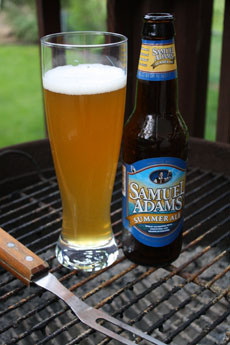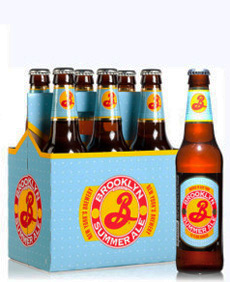TIP OF THE DAY: Lighter Beer For Summer
|
While some beer drinkers quaff their chosen brew month in and month out, others follow the seasons, choosing summer beers when the weather gets hot.
By varying recipes with different malts, hops and yeasts, craft brewers produce summer beers, The goal is to deliver flavor while keeping the body lighter and more refreshing on a hot day. Substituting wheat for some or all of the barley delivers a lighter body with crisp tartness. Different hops add summery notes, from the aromatic orange rind nose of Pacifica hops to the lemony, spicy flavor of the German Noble hop. Yeasts also play their part: Bavarian yeast, for example, add tropical fruit and a hint of clove. Brewers can add extra flavors like fresh citrus zest, coriander or thyme, or a touch of caramel malt for sweeter notes. For your drinking pleasure, we’ve pulled together a list of the classic summer beers. All are made by American craft brewers and available as imports. Consider having a tasting of the different styles, and pick your favorites to enjoy them through the rest of the summer. As the weeks fly by, they’ll be replaced on store shelves soon enough with Oktoberfest beer and pumpkin ale. Fruit Beer. These include the classic Belgian lambics (look for cherry kriek and framboise/frambozen) and newer American styles. U.S. craft brewers add fresh puréed berries or other summer fruits into the secondary fermentation. |
|
|
|
Hefeweizen (also called Hefeweisse, Hefeweissbier and Weissbier). This light bodied wheat beer from Bavaria can still offer great complexity; the body is crisp and effervescent. Hefeweizen is German for “yeast wheat” (Hefe = yeast, weizen = wheat); the traditional Bavarian Hefeweizen/Weissbier yeast strain creates flavors of banana and spicy clove. Hefeweizen is not filtered before bottling; thus, the yeast continue to act (this is known as bottle conditioning) and there may be sediment in the bottle (ignore it). Kölsch. This pale golden ale, developed in Cologne (Köln), Germany, uses a strain of yeast that gives it a very distinct flavor profile. Light straw in color with layers of delicate fruit, Kölsch has a very balanced crispness with a slight sweetness. |
||
|
|
Summer Lager. Also called Helles-style; “Helles” is the German word for “light.” Don’t expect anything like a mass-produced American “Lite” beer: These beers are maltier and hoppier summer lagers that are bright with fresh grain character. Brewers often choose hops hops that provide notes of citrus and spice. Saison. Saison, the French word for season, is a French farmhouse ale. Historically, it was a refreshing summer ale made by farmers for their own consumption. Modern commercial versions are generally around 7% ABV, highly carbonated, fruity and spicy—sometimes from hops, sometimes from the addition of spices. Summer Ale. Also called English summer ale, this is a lighter version of a classic pale ale. It retains the wonderful flavors and aromas of ale’s malt and hops, while using a significant portion of wheat for a lighter body and crisp finish. Unfiltered Wheat Ale/Beer. See Hefeweizen, above. These beers are left unfiltered to retain all of the flavors derived from the malt and yeast. Don’t be put off by the cloudiness; enjoy the depth of flavor profile. |
|
|
Wheat Ale. Wheat enhances the mouthfeel of the beer. Some brewers add orange peel, coriander or other flavors for refreshing notes Witbier. A Belgian specialty, typically brewed with orange peel and coriander for summer refreshment. Check out the history of beer and the different styles of beer.
|
||




